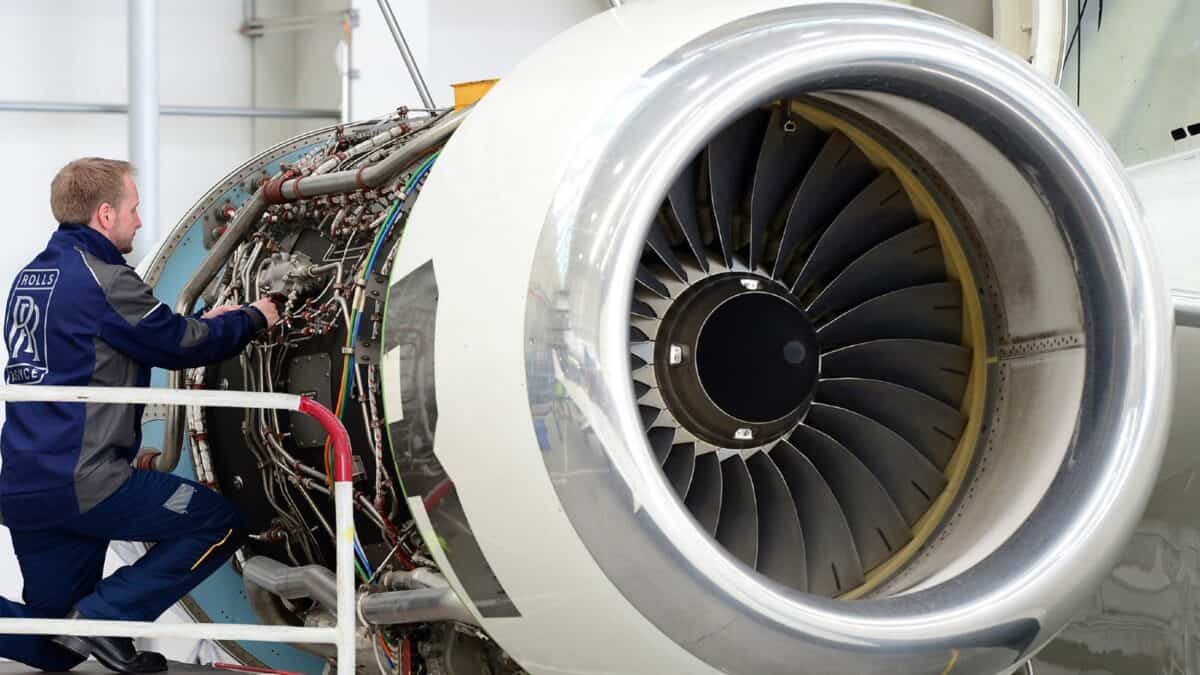I’ve watched the stunning gains in the Rolls-Royce (LSE:RR.) share price with glee. The FTSE 100 aerospace and defence group was 2023’s top index performer and it’s been my most successful stock market investment over the past year.
However, recently Rolls-Royce shares dipped below £4 after a period of sideways trading action in the past month. Some investors are beginning to question whether the epic boom could be ending.
With that in mind, let’s take a closer look at the jet engine maker’s investment prospects today.
Should you invest £1,000 in Rolls-Royce right now?
When investing expert Mark Rogers has a stock tip, it can pay to listen. After all, the flagship Motley Fool Share Advisor newsletter he has run for nearly a decade has provided thousands of paying members with top stock recommendations from the UK and US markets. And right now, Mark thinks there are 6 standout stocks that investors should consider buying. Want to see if Rolls-Royce made the list?
A crowded trade
Rolls-Royce has proved to be one of the most popular UK shares to buy in recent times. Not only has the business attracted significant interest from institutional investors, but retail buyers have also been piling in.
The company was the fourth most popular British stock for Freetrade customers in 2023. Only a trio of fellow FTSE 100 firms — Glencore, Legal & General, and Barclays — garnered more buyers on the trading platform.
The surge in popularity has caused the Rolls-Royce share price to quadruple in a little over a year. The company’s valuation has soared too. Its forward price-to-earnings (P/E) ratio now stands above 29, which might indicate the stock’s overbought.
Understandably, the shares are considerably more expensive today than they were in the depths of the pandemic when bankruptcy was a realistic possibility. As a result, there’s a risk future returns may be less spectacular compared to the past 18 months.
Reasons to be bullish
Despite some concerns about a lofty valuation, many broker forecasts suggest further growth could be on the cards for the share price. The City consensus is for a price target of 448p. This implies the stock has more room to run from today’s price below 398p.
CEO Tufan Erginbilgic aims to quadruple the firm’s profits by 2027. That ambition might look outlandish, but considering the group exceeded earnings expectations across all divisions for FY23, I wouldn’t want to bet against it happening.
Furthermore, the company’s bonds are now given investment-grade ratings by all three major agencies — Fitch, S&P Global, and Moody’s.
This was previously cited as a key objective by Erginbilgic and a necessary precursor to the resumption of dividend payouts. The business hasn’t paid passive income to shareholders since January 2020.
Should Rolls-Royce achieve its financial targets and become a dividend stock once again, long-term growth prospects are likely to remain healthy in my view. After all, there’s credibility in the argument that a premium business deserves a premium valuation.
I’m holding my shares
Given the increase in Rolls-Royce’s P/E ratio, I think it’s likely the pace of future gains will be slower than the extraordinary post-pandemic recovery we’ve seen. That said, I remain optimistic about the firm’s long-term prospects, even if the share price undergoes some consolidation in the near term.
The board expects large-engine flying hours will reach 100%-110% of 2019 levels this year, built on a solid recovery in international travel demand. This should support further earnings growth for the civil aviation division. Moreover, the dreadful ongoing wars in Ukraine and Gaza continue to act as tailwinds for the defence business.
In my opinion, investors who aren’t already shareholders should consider adding Rolls-Royce shares to their portfolios today.








